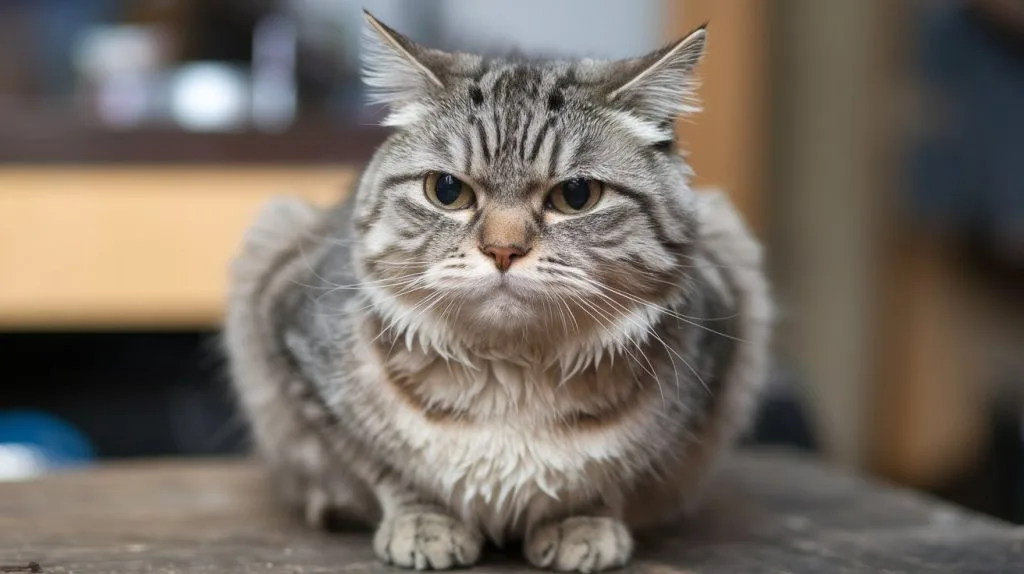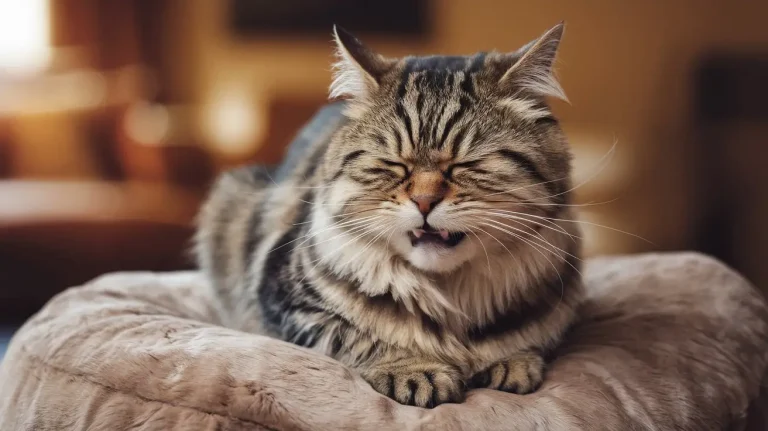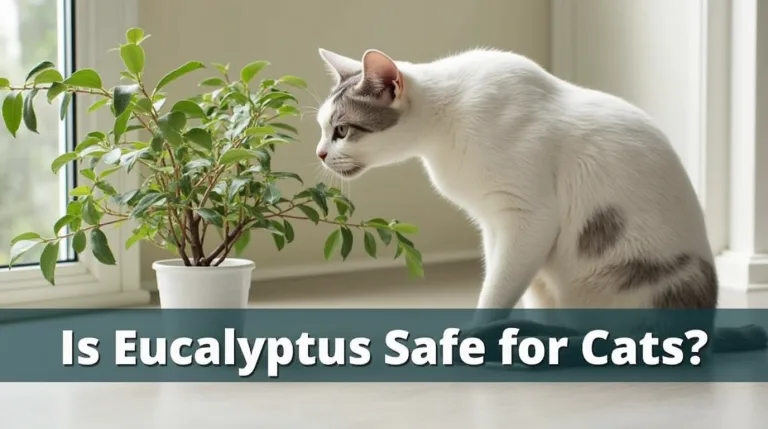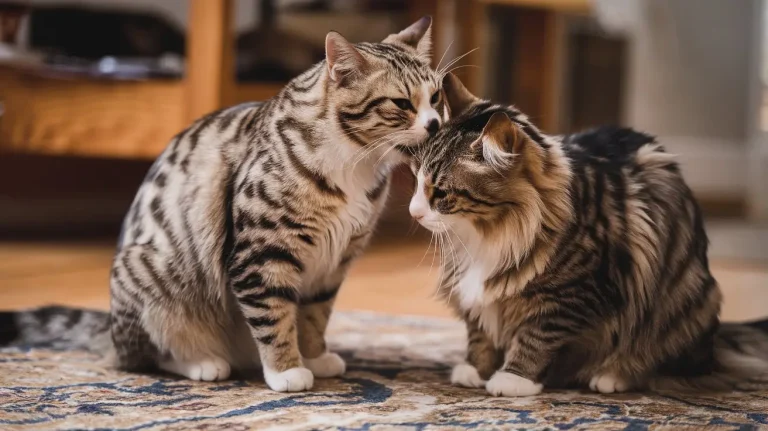Cats are known for their mysterious nature, and one question that often puzzles pet owners is whether can cats cry?. This common inquiry stems from the observation of watery eyes in felines, leading many to wonder if cats experience emotions in the same way humans do. Understanding the truth behind cat crying is crucial for every cat owner to ensure the health and well-being of their feline companions.

This article delves into the physiology of cat eyes and explores the various causes of watery eyes in cats. It examines the differences between medical and emotional reasons for what appears to be cat crying. Additionally, it provides insight on how to diagnose eye issues in cats and offers guidance on treating and managing watery eyes. By the end, readers will have a clearer understanding of what’s really happening when their cats seem to cry.
Table of Contents
The Physiology of Cat Eyes
Can Cats Cry? Structure of Cat Eyes
Cats possess remarkably large eyes in proportion to their head size, positioned face forward in bony cavities called orbits 1. The white part of the eye, known as the sclera, is covered by a thin membrane called the conjunctiva, which also lines the inside of the eyelids 1. At the front of the eye is a clear dome called the cornea, which protects the eye and allows light to enter 1.
The iris, the circular, colored area of the eye, controls the amount of light entering through the vertically slit pupils 1 2. Behind the iris sits the lens, which changes shape to focus light onto the retina 2. The retina, lining the back of the eye, contains photoreceptor cells that sense light 2.
Tear Production Process
Tears are crucial for maintaining eye health in cats. They consist of water, oil, and mucus 3. The lacrimal glands, located at the top outer edge of each eye, produce the watery portion of tears 3. Glands within the third eyelid also contribute to this watery component 3. Mucus glands in the conjunctiva, called goblet cells, produce mucus, while meibomian glands within the eyelids produce the oily portion 3.
Role of Tears in Eye Health
Tears play a vital role in keeping cats’ eyes clean and clear 4. They help lubricate the eyes, aid in removing debris, and protect the eye surface 4. The mixture of water, oil, and mucus creates a protective tear film that is slower to evaporate 3. This tear film constantly flushes out dust and minor irritants that might enter the eye, maintaining ocular health 4.
Cats, like humans, have tear ducts that allow excess tears to drain into the nose 3. These nasolacrimal ducts have openings at the edge of the upper and lower eyelids near the nose 3. This drainage system helps maintain the proper balance of moisture in the eyes, ensuring optimal eye function and health.
Medical vs. Emotional Causes of Cat ‘Crying’
Physical Reasons for Watery Eyes
Cats’ watery eyes, known as epiphora in veterinary terms, are typically caused by medical issues rather than emotional distress 1. Common physical reasons include eye irritation from dust or scratches, contagious diseases like upper respiratory infections, and clogged tear ducts 2. Other potential causes are conjunctivitis, eye infections, allergies, and structural issues, particularly in cats with flat faces and rounded heads 2.
Epiphora can manifest as a brown or reddish staining on the face below the eyes, especially noticeable in white-haired cats 3. Additional symptoms may include red eyes, squinting, eye scratching, inflammation, discharge, droopy skin around the eye orbit, corneal ulceration, and eye rubbing 3.
How Cats Express Sadness and Pain
While cats do experience emotions, they don’t express sadness or pain through tears 4. Instead, cats communicate their distress through body language and vocalizations 4. Signs of low mood, pain, or distress in cats may include making long noises or yowls, becoming lonely, and loss of appetite 5.
Cats can detect and respond to human emotions, including when a person is crying . They may exhibit comforting behaviors such as rubbing against the person, purring, or even licking their tears . This suggests that cats can sense and react to the emotional states of their human companions.
Debunking the Myth of Emotional Tears
It’s crucial to understand that cats do not cry tears as an emotional response . When a cat’s eyes are watering, it’s typically a sign of a health issue rather than an emotional reaction . Tears in cats serve important physiological functions, such as maintaining eye health, providing lubrication, and protecting against infections 7.
If a cat’s eyes are consistently watery or if there are other concerning symptoms, it’s important to consult a veterinarian. What may appear to be “crying” could be a sign of various medical conditions ranging from minor irritations to more serious issues like glaucoma 8. Recognizing these signs as potential health problems rather than emotional expressions is vital for the well-being of feline companions.
Diagnosing Eye Issues in Cats
Common Symptoms of Eye Problems
Cat owners should be vigilant for signs of eye issues in their feline companions. Common symptoms include squinting, excessive tearing, discharge, redness, cloudiness, and changes in pupil size 1. Cats may also paw at their eyes or show signs of discomfort in bright light. Any sudden changes in vision, such as bumping into objects or difficulty finding food bowls, should be taken seriously 2.
Veterinary Examination Process
When a cat shows signs of eye problems, a veterinary examination is crucial. The process typically begins with a thorough review of the cat’s medical history and a discussion of the observed symptoms 3. The veterinarian will perform a comprehensive eye exam, checking tear production, measuring eye pressure, and examining the eyelids, cornea, lens, retina, and optic nerve 3.
A darkened room is often used for the examination, allowing for better visibility of eye structures 4. The vet may use various tools, including a focal light source, magnification devices, and possibly a slit-lamp biomicroscope for detailed observation 4.
Diagnostic Tests for Feline Eye Conditions
Several diagnostic tests may be employed to identify specific eye conditions:
- Schirmer tear test: Measures tear production to diagnose conditions like keratoconjunctivitis sicca 5.
- Fluorescein staining: Detects corneal ulcers or other surface irregularities .
- Tonometry: Measures intraocular pressure to check for glaucoma .
- Cytology: Involves taking cell samples from the eye surface for microscopic examination 7.
- PCR testing: Used to detect viruses like feline herpesvirus, though results must be interpreted cautiously 8.
In some cases, advanced imaging techniques such as ultrasound or MRI may be necessary for a comprehensive diagnosis 9. The veterinarian will choose the most appropriate tests based on the cat’s symptoms and initial examination findings.
Treatment and Management of Watery Eyes
Addressing Underlying Medical Conditions
The treatment of watery eyes in cats primarily focuses on managing the underlying cause of epiphora. For cats with facial conformations that predispose them to eye issues, such as Himalayans, management involves keeping the face clean using gentle pet wipes 1. If a cat shows signs of eye problems, including discharge, rapid blinking, or redness, a veterinary examination is crucial 2. Clear mucus may indicate a viral infection, which often resolves on its own within a week or two 3. However, green or yellow mucus suggests a bacterial infection, typically treated with antibiotic eyedrops or ointment 4.
Eye Medications and Therapies
Veterinarians may prescribe various medications depending on the specific condition. For eye infections, topical antibiotics like oxytetracycline or triple antibiotic ointments are commonly used 5. In cases of viral infections, antiviral medications such as idoxuridine may be prescribed 5. For cats with systemic symptoms or those who don’t tolerate eye drops well, oral antibiotics like doxycycline or azithromycin might be recommended 5. L-lysine supplements are sometimes used to treat feline herpes virus infections, although studies on their effectiveness are ongoing .
When Surgery Might Be Necessary
In some cases, surgical intervention becomes necessary. Cats with eyelid abnormalities or abnormal eyelashes typically require surgery . For instance, cats with rolled-in eyelids may need a procedure to evert the eyelid, preventing eyelashes from rubbing against the cornea . Ectopic cilia may be surgically removed or treated with cryosurgery to prevent regrowth . In severe cases, such as when dealing with persistent infections or tumors, more invasive procedures like enucleation (eye removal) might be considered 7. The cost of such surgeries can vary, with cataract removal potentially costing up to $3000 for one eye 8.
Conclusion
To wrap up, understanding the true nature of cat “crying” is crucial for every cat owner. Watery eyes in cats are typically a sign of medical issues rather than emotional distress. This knowledge has a significant impact on how we interpret and respond to our feline companions’ needs. By recognizing the signs of potential eye problems and seeking timely veterinary care, cat owners can ensure their pets’ ocular health and overall well-being.
Cats communicate their emotions through various behaviors, but not through tears. This insight allows us to better understand and respond to our cats’ needs. Whether it’s addressing underlying medical conditions, administering eye medications, or in some cases, considering surgical options, proper care is essential to maintain healthy feline eyes. By staying informed and attentive, cat owners can provide the best possible care for their furry friends, ensuring their comfort and happiness.
FAQs
1. Do cats shed tears due to sadness?
Cats do not cry tears as a result of feeling sad or experiencing pain. However, they may show changes in behavior, including making crying sounds, which are typically longer and lower in pitch compared to their usual vocalizations.
2. Is it typical for cats to have tears?
Yes, it is normal for cats to produce tears. Their tear ducts help keep their eyes moist and clear out dirt, dust, and other foreign particles. Unlike humans, cats’ tears usually drain through small ducts from the eyes to the nose, rather than running down their faces.
3. What could be the reasons behind a cat crying?
Crying in cats can often indicate that they are in discomfort or feeling unwell. Conditions such as kidney problems, thyroid issues, dental pain, and other medical ailments can lead to excessive crying. Cats are generally stoic and tend to conceal their pain, making crying a less common symptom.
4. Do cats cry naturally?
Cats can have watery eyes due to physiological reasons, but they do not cry due to emotional distress like humans do. Their watery eyes are not an emotional response but are typically related to physical eye health.
References
[1] – https://www.thesprucepets.com/cat-crying-554833
[2] – https://www.quora.com/Do-cats-cry-when-they-are-sad
[3] – https://www.rd.com/article/can-cats-cry/
[4] – https://brownvethospital.com/blog/do-cats-cry/
[5] – https://www.ncbi.nlm.nih.gov/pmc/articles/PMC10983608/
[6] – https://www.merckvetmanual.com/cat-owners/eye-disorders-of-cats/eye-structure-and-function-in-cats
[7] – https://conservationcubclub.com/cat-eye-anatomy-those-gorgeous-cat-eyes/
[8] – https://basepaws.com/blog/the-world-through-the-feline-eyes
[9] – https://www.petmd.com/cat/conditions/eyes/watery-eyes-epiphora-cats





